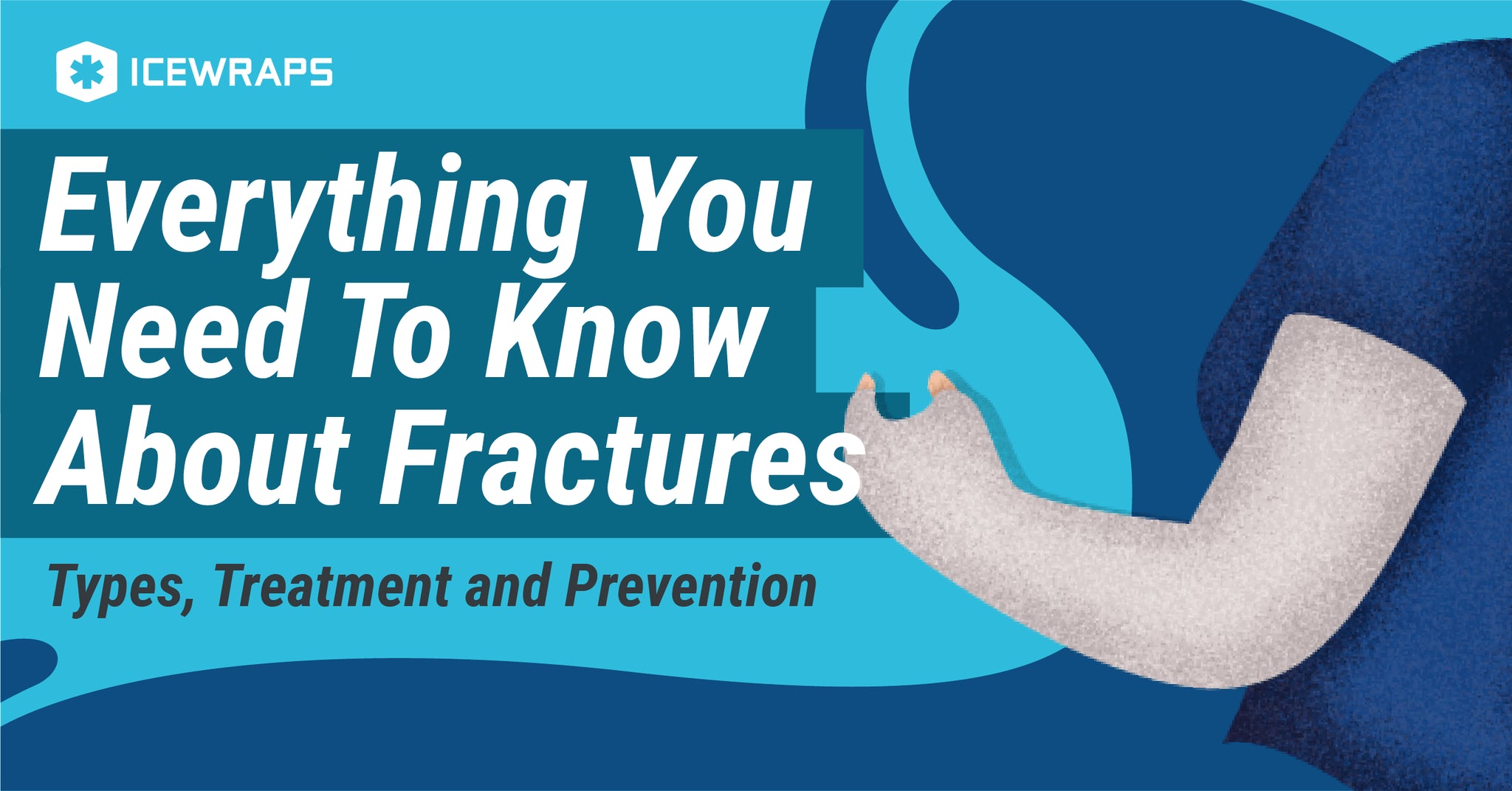Your Cart is Empty

Contents
A major fracture can change someone’s life in a snap.
This condition can occur at any time, to any bone in the body. Older adults are more susceptible to fractures since bones tend to turn brittle as people age but anyone can get break a bone at any point in their life. Stats even show that the average person can experience at least two fractures in their lifetime.
Have you ever broken a bone before or do you know someone who’s had a fracture recently? In this article, we’ll discuss the common types of fractures, their causes, and what you can do to hasten recovery:
There are many different types of fractures, but they’re usually classified according to how the bone breaks.
Closed fractures occur when the broken pieces of bone do not break the skin. The bone can crack, break partly or snap in half. Closed fractures can be further classified into displaced or non-displaced fractures.
When trauma or force causes the broken pieces of bone to move out of their natural alignment, the fracture is considered to be displaced. This usually requires surgical treatment so the bones can set the right way.
When the bone breaks clean and stays in its normal anatomical position, it’s called a non-displaced fracture. Often, non-displaced fractures only require conservative treatment, like immobilization and casting.
As the name suggests, an open fracture occurs when the bones snap and pierce the skin. This type of fracture puts the person at high risk for deep bone infection and requires immediate medical attention.
When long bones (like the ones found in the arm or leg) get hit by a perpendicular force, they can break at a right angle. This is called a transverse fracture. When the force comes from above or below, the bones can break diagonally, resulting in an oblique fracture.
Bones don’t always break clean; sometimes they can shatter into many pieces. This type of injury is called a comminuted fracture and it often occurs in the hand or feet.
Not all fractures are caused by severe trauma, as in accidents or falls. Sometimes, they can occur due to repetitive stress and overuse. Stress fractures manifest as small cracks or severe bruises on the bone. Athletes and people who engage in physical activities are most susceptible to these types of fractures. Aside from overuse, you can also get stress fractures if you suddenly change the intensity of activity.
Bones can also break due to disease. This is called a pathologic fracture. Osteoporosis is one of the main culprits in spine fractures, while other conditions like cancer, nutrient deficiencies, and hormonal imbalances can also cause pathologic breaks in the bone.
Most fractures don’t take their time--- you’ll see, feel and even hear a broken bone almost immediately. Here are the most common signs and symptoms of fractures:

Fractures are mostly confirmed through X-rays and other imaging procedures like CT scans and MRIs.
Fractures need immediate medical attention. If you suspect a broken bone, immobilize the area using a splint and seek emergency medical help promptly. You can use a cold pack to help alleviate swelling around the area.
Avoid unnecessarily moving the person, especially if the injury is in the back, neck or head. These areas are susceptible to nerve damage and moving a person can do more harm than good. Apply first aid on site and wait for emergency medical services to arrive.
Unlike most common conditions, fractures can not heal successfully from home management alone. Broken bones can heal naturally, but for them to fuse together the right way, they need to be set back to their natural alignment.
Treatment usually depends on the type of fracture and body part. Often, simple, closed fractures just need to be immobilized with a cast. The cast stabilizes the fracture and allows the union of the broken pieces.
Open and comminuted fractures need a more complicated course of action. Doctors need to surgically realign the bones using pins, plates, and rods. They may also use devices like braces and tractions to help in the healing process.
After surgery, the injured part will be placed in a cast. Depending on the type of fracture, healing can last for weeks up to several months. Physical or occupational therapy would then follow after the cast comes off.
Fracture recovery is a long hard road and patients need all the help they can get from their medical team, their families and themselves. It’s important for a person to maintain independence and comfort during recovery.
The biggest challenge for people with fractures is dealing with the cast and the accompanying assistive devices, like slings, canes, and crutches. Be patient in learning how to use these devices. They take a lot of getting used to, but they will help you recover faster by easing weight off your injured limb.
You may also have to make minor adjustments to your home to help you move around better with your cast and assistive devices. For example, if your fracture is located on your lower limbs, you may need help climbing the stairs or may need to move to a downstairs room until the cast is off.
Proper cast care is also important to avoid complications. Moisture will weaken the cast and irritate your skin, so make sure to keep it clean and dry. Do not submerge it in water and always use a plastic lining to keep it from getting wet in the shower.
The skin inside the cast may feel itchy, but avoid scratching or sticking foreign objects in.
It’s normal to experience some swelling around the area during the first stages of healing. To lessen inflammation and discomfort, make sure to elevate the area and use a cold compress over the cast. Place the cold compress inside a zip baggie or use a cloth cover to keep your cast dry.
During the last stages of the bone healing process, usually around 8-12 weeks after the injury, you can use heat therapy to help relax those tight muscles under the cast.
If the area in and around your cast feels irritated, too tight or tingling, consult your doctor.

|

|
 |
| ICEWRAPS EXTRA LARGE NECK ICE PACK WITH SOFT COVER | ICEWRAPS SINGLE USE 4X7 INSTANT COLD PACKS, CASE OF 50 | ICEWRAPS 12X21 OVERSIZE COLD THERAPY CLAY PACK WITH COVER |
 |
 |
 |
After the cast comes off, it’s time for physical and occupational therapy.
PT exercises are necessary to bring your limb back to tip-top shape. Remember, that fractured body part has been kept immobile with that cast for weeks. It’s suffering from poor circulation, muscle weakness, skin dryness and a slew of other things so it’s important to exercise it to get the blood flowing and regain range of motion.
Follow your physical therapist’s recommended exercises. These exercises will help you gain muscle tone and proper circulation. They depend on the location of the injury and its severity. Some exercises can be done at home, while others need the supervision of a medical professional.
Broken bones mean serious business. They hurt a lot, cost a lot and they take a long time to heal. To prevent fractures, exercise safety at all times, especially if you're engaging in a lot of physical activity.
Wear proper safety gear, practice good body mechanics and exercise regularly to keep your bones and muscles strong. Nutrition also plays a huge part in fracture prevention, so make sure to include foods that are high in calcium and Vitamin D in your diet.
If you've recently broken a bone, follow the tips above to hasten your recovery.
Comments will be approved before showing up.